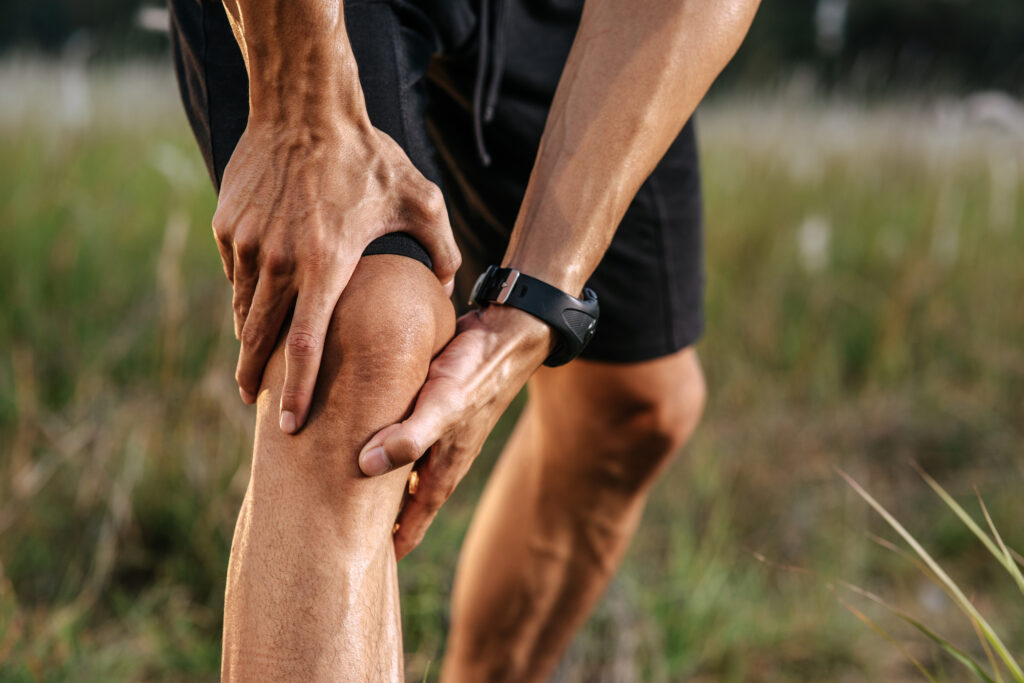You know that managing daily life can become increasingly challenging for seniors, and addressing these mobility issues is essential. By implementing safe adjustments in their environment, you can greatly enhance their independence and confidence. Simple changes, such as decluttering spaces or adding grab bars, can make a world of difference. But there's more to it than just these modifications; understanding the broader context of mobility and support systems can lead to far-reaching benefits. What other strategies might help create a truly mobility-friendly space for seniors?
Understanding Senior Mobility Challenges
Many seniors face significant mobility challenges that can hinder their independence and quality of life. As you age, factors like muscle weakness, joint pain, and balance issues often become more pronounced. These physical changes can make everyday tasks, such as walking, climbing stairs, or even standing up from a chair, feel intimidating.
You might find yourself relying more on assistive devices like canes, walkers, or wheelchairs, which can sometimes feel limiting. Chronic conditions like arthritis, osteoporosis, or cardiovascular issues can further exacerbate these challenges. You may experience fatigue or pain that makes even short distances feel overwhelming.
Additionally, cognitive factors like memory loss or confusion can affect your ability to navigate your environment safely. You might hesitate to venture out alone, fearing a fall or becoming disoriented.
Environmental factors also play a role in mobility challenges. Poorly designed homes with stairs, slippery floors, or inadequate lighting can create hazards that increase your risk of falls. Even simple tasks can become perilous when obstacles clutter your living space or when you need to reach for something on a high shelf.
Understanding these challenges is the first step towards improving your mobility. By recognizing the barriers you face, you can begin to explore solutions and adaptations that enhance your independence.
You deserve to feel confident and secure in your daily activities, and addressing these mobility issues is essential in reclaiming that sense of freedom.
Importance of Safe Adjustments
When it comes to improving your mobility, making safe adjustments is essential.
You'll want to focus on enhanced mobility techniques and injury prevention strategies tailored just for you.
A personalized adjustment plan can make all the difference in staying active and safe.
Enhanced Mobility Techniques
Enhanced mobility techniques play an essential role in ensuring seniors can navigate their environments safely and confidently. By incorporating these techniques into daily routines, you can enhance your overall mobility and independence.
Start by engaging in gentle exercises that focus on balance and flexibility. Simple activities like stretching, yoga, or tai chi can improve your strength and coordination, making it easier to move around.
Using assistive devices, such as canes or walkers, can also help you maintain stability. Be sure to select the right device for your needs and learn how to use it properly. This small adjustment can notably boost your confidence when walking.
Consider modifying your home environment as well. Removing tripping hazards, adding grab bars, and ensuring adequate lighting can create a safer space for movement.
Practicing mindful techniques, like focusing on your steps and posture, can also improve your awareness and coordination.
Lastly, don't hesitate to seek professional guidance. A physical therapist can provide personalized exercises tailored to your needs, ensuring you're using enhanced mobility techniques effectively.
Injury Prevention Strategies
To certify safe mobility, it's crucial to adopt injury prevention strategies that focus on making thoughtful adjustments in your daily routine. By proactively identifying potential hazards and modifying your environment, you can greatly reduce the risk of injury.
Start by evaluating your living space. Remove clutter, guarantee adequate lighting, and secure rugs to prevent slips and falls. You might also consider using assistive devices like grab bars in the bathroom or a cane for added stability.
Incorporating movement into your day is just as critical. Simple exercises aimed at improving balance and strength can help you maintain independence. Remember, it's not just about mobility; it's about enjoying life without the constant worry of injury.
Here are some key strategies to keep in mind:
- Create a safe environment: Clear walkways and eliminate tripping hazards.
- Stay active: Engage in exercises tailored to your ability to enhance strength and balance.
- Listen to your body: If something doesn't feel right, don't push through. Rest or seek help when needed.
Personalized Adjustment Plans
Making safe adjustments in your daily routine isn't just about eliminating hazards; it also involves creating a personalized adjustment plan that aligns with your unique needs and lifestyle. By evaluating your specific challenges, preferences, and goals, you can design a plan that enhances your mobility while ensuring safety.
Start by identifying areas in your home or daily activities where you face difficulties. Are there stairs that pose a risk? Do you struggle with reaching for items on high shelves? Once you pinpoint these challenges, consider solutions tailored to you. This could mean installing grab bars, using a reacher, or rearranging furniture for easier navigation.
Engage in flexibility and strength exercises that suit your fitness level. Incorporating these into your routine can greatly boost your confidence and stability.
Don't forget to evaluate your footwear; comfortable, supportive shoes can make a world of difference.
Regularly review and adjust your plan as needed. As your mobility improves or changes, your strategies should evolve too.
Modifying Living Spaces
When you think about modifying living spaces for seniors, start by evaluating the current layout.
Identify essential safety features and consider any accessibility enhancements needed to make daily life easier.
These adjustments can greatly improve mobility and overall comfort.
Assessing Current Layout
Evaluating your home's layout is essential for enhancing senior mobility and ensuring safety. Start by identifying areas that may pose challenges, such as narrow hallways or cluttered spaces.
Consider how easily you or your loved one can move through the home without obstacles. Every small adjustment can make a significant difference in daily life.
Here are some key aspects to assess:
- Furniture placement: Is there enough space to navigate around furniture without bumping into it?
- Flooring conditions: Are there any rugs or flooring changes that might cause trips and falls?
- Access to essentials: Can you easily reach essential items, like medications or kitchen supplies, without straining?
Essential Safety Features
Incorporating essential safety features into your living spaces can greatly enhance mobility for seniors. Start by making certain that all floors are even and free of tripping hazards. You might want to remove area rugs, as they can slide and pose a risk.
Next, consider adding non-slip mats in areas prone to moisture, like bathrooms and kitchens.
Install grab bars in strategic locations, such as bathrooms and hallways, to provide support when standing or moving. These can greatly reduce the chance of falls.
Make sure that lighting throughout your home is bright and well-distributed, especially in staircases and entryways, to enhance visibility.
For those with limited mobility, consider adjusting furniture layout to create wider pathways. This will facilitate easier movement throughout the space.
You can also install motion-sensor lights to make certain that no one is left in the dark when maneuvering.
Lastly, consider using raised toilet seats and shower chairs, which can make personal care activities much safer and more accessible.
Accessibility Enhancements Needed
Creating a safe environment is just the first step in enhancing senior mobility; modifying living spaces for better accessibility is equally important. You want to guarantee that every corner of your home supports independence and ease of movement.
Small changes can make a significant difference, allowing seniors to navigate their surroundings confidently.
Consider these accessibility enhancements:
- Wider doorways: This simple adjustment can accommodate mobility aids, like walkers or wheelchairs, making movement smoother.
- Non-slip flooring: By installing non-slip surfaces, you reduce the risk of falls, creating a safer living space for seniors.
- Grab bars and handrails: Strategically placing these in bathrooms and stairways provides essential support, helping seniors maintain balance as they move.
These modifications not only enhance mobility but also foster a sense of security and dignity for seniors.
By prioritizing accessibility, you're empowering them to live more freely in their own homes, which is invaluable.
Utilizing Assistive Devices
Assistive devices play an essential role in enhancing mobility for seniors, helping them maintain independence and improve their quality of life. These tools can range from simple items like canes and walkers to more complex devices such as powered scooters and stairlifts. By utilizing these aids, you can navigate your environment more safely and confidently.
When choosing an assistive device, consider your specific needs and lifestyle. For instance, if you struggle with balance, a walker with hand grips may provide the support you require. On the other hand, if you have difficulty standing for long periods, a mobility scooter could be an excellent solution for getting around your community.
Take time to test different devices to see which one feels most comfortable and beneficial for your daily activities.
It's also essential to guarantee that these devices are properly adjusted to fit your body. A poorly fitted cane or walker can lead to discomfort or even injury. Don't hesitate to ask for help from a healthcare professional to get the right fit and guidance on using the device effectively.
In addition, regular maintenance is important. Check your assistive devices frequently for wear and tear, and replace any parts as needed.
Keeping your devices in good condition guarantees they serve you well for years to come. By incorporating assistive devices into your routine, you'll find it easier to move around, stay active, and enjoy life to the fullest.
Implementing Targeted Exercises
Targeted exercises can greatly enhance mobility for seniors by focusing on strength, balance, and flexibility. By incorporating specific exercises into your routine, you can improve your overall physical health and regain confidence in everyday activities.
It's vital to engage in exercises that suit your ability level, making sure you work safely and effectively.
To get started, consider these emotional benefits you may experience:
- Increased independence: Imagine being able to navigate your home or community without assistance.
- Boosted energy levels: Feel invigorated and ready to take on the day after a good workout session.
- Enhanced social connections: Joining a class or group exercise can lead to new friendships and a sense of belonging.
Strength training is important, as it helps build muscle mass and supports your joints. Simple exercises like seated leg lifts or wall push-ups can be effective.
Flexibility exercises like gentle stretches or yoga can aid in maintaining a full range of motion, while balance-enhancing activities, such as standing on one foot or heel-to-toe walking, can reduce the risk of falls.
Before starting any exercise program, it's wise to consult with your healthcare provider to confirm the exercises are appropriate for your specific needs.
Consistency is key, so try to incorporate these targeted exercises into your daily routine. As you progress, you'll likely notice improvements in your mobility, making it easier to enjoy life to the fullest.
Enhancing Balance and Coordination
To enhance balance and coordination, it's essential to incorporate a variety of exercises that challenge your stability and promote body awareness. Start with simple standing exercises. Try balancing on one foot for 10-30 seconds, then switch to the other foot. You can gradually increase the difficulty by closing your eyes or standing on a soft surface, like a cushion. This not only strengthens your muscles but also improves your proprioception.
Next, consider dynamic movements. Walking heel-to-toe in a straight line can greatly enhance your balance. You might also try walking sideways or backwards, which engages different muscle groups and encourages coordination. Incorporating these movements into your daily routine can make a considerable difference.
Don't overlook strength training, as it plays a key role in maintaining balance. Focus on exercises targeting your legs, core, and back. Simple squats, lunges, or even seated leg lifts can increase muscle strength and stability. Resistance bands are excellent tools for adding challenge without overwhelming yourself.
Yoga and tai chi are also fantastic options for improving balance and coordination. These practices emphasize controlled movements, body awareness, and breathing, making them perfect for enhancing your stability. Regular practice can lead to noticeable improvements in your coordination and overall mobility.
Finally, be sure to listen to your body. If an exercise feels too difficult or causes discomfort, modify it or consult with a professional. The goal is to progress at a pace that feels safe and effective for you.
Creating a Supportive Environment
Creating a supportive environment is essential for enhancing senior mobility and guaranteeing safety at home. When you think about the spaces your loved ones navigate daily, consider how small adjustments can make a significant difference. You can create a haven that promotes independence and confidence, allowing seniors to move freely and comfortably.
Start by decluttering pathways. Remove any obstacles that could cause trips or falls, like loose rugs or low furniture. Next, guarantee adequate lighting in all areas, especially stairs and hallways. Bright, well-lit spaces can reduce the risk of accidents and help seniors feel more secure as they move around.
It's also helpful to install grab bars in bathrooms and hallways, providing extra support when needed. These small changes can help foster a sense of security. Consider the emotional aspect of your efforts—creating a nurturing atmosphere can uplift spirits and encourage seniors to engage more actively in their daily lives.
Here are a few simple adjustments that can evoke a sense of safety and comfort:
- Warm, welcoming colors that stimulate joy and relaxation.
- Comfortable seating and gathering areas that invite social interaction.
- Accessible storage solutions that make it easy to find essentials without straining.
Encouraging Regular Health Check-ups
Maintaining a supportive environment at home goes hand-in-hand with keeping up with regular health check-ups, which play an essential role in promoting senior mobility. Regular check-ups help you catch potential health issues early, ensuring that any mobility-related problems are addressed promptly. When you stay on top of your health, you're not just enhancing your well-being; you're also maintaining your independence.
Encourage your loved ones to schedule annual visits with their healthcare providers. These check-ups often include evaluations of balance, strength, and overall physical health. By identifying any changes in their health, doctors can recommend the necessary adjustments, whether it's physical therapy, medication changes, or new exercise routines. This proactive approach can prevent falls and other mobility issues down the line.
In addition to physical health, mental health is vital for mobility. Regular check-ups can also provide an opportunity for discussing mental well-being, which can greatly impact physical mobility. If anxiety or depression is affecting your loved one, addressing these concerns promptly can lead to improved engagement in mobility-enhancing activities.
Don't overlook the importance of eye and ear exams, either. Vision and hearing impairments can severely affect mobility. Ensuring that your loved one's prescriptions are up-to-date can make a world of difference in their ability to move safely and confidently.
Encouraging regular health check-ups isn't just about maintaining health; it's about empowering seniors to live their lives fully and actively.
Building a Mobility-Friendly Community
A truly mobility-friendly community enhances the lives of its seniors and fosters independence. It's about creating an environment where older adults can navigate their neighborhoods with ease, safety, and confidence.
To build this kind of community, you need to think about accessibility in every aspect of urban planning and daily life.
Consider implementing features that support mobility for seniors. Here are some essential elements to include:
- Safe, well-maintained sidewalks that offer adequate space for walking, using wheelchairs, or pushing strollers.
- Accessible public transportation options that cater to the needs of seniors, ensuring they can travel to appointments, grocery stores, and social activities without hassle.
- Community spaces that promote social interaction, such as parks with seating areas and outdoor fitness equipment tailored for older adults.
These features don't just make life easier; they can spark joy and decrease feelings of isolation.
When seniors feel empowered to move about freely, they're more likely to engage with their community, forge connections, and maintain an active lifestyle.
Fostering a mobility-friendly community is a shared responsibility. By advocating for these changes, you can help create a supportive environment where seniors can thrive.
Remember, the small adjustments you push for today can lead to significant improvements in the quality of life for countless older adults tomorrow.
Let's work together to make your neighborhood a place where everyone, especially seniors, can move with confidence and ease.
Conclusion
Improving senior mobility through safe adjustments isn't just about making changes; it's about enhancing independence and quality of life. By modifying living spaces, utilizing assistive devices, and encouraging regular check-ups, you can create a supportive environment that fosters confidence and engagement. Remember, small changes can lead to significant improvements. Stay proactive in addressing mobility challenges, and help seniors navigate their homes safely, ensuring they remain active and involved in their daily lives.



